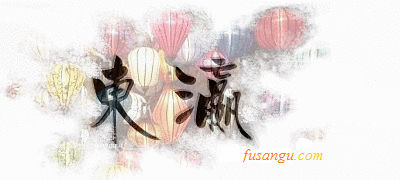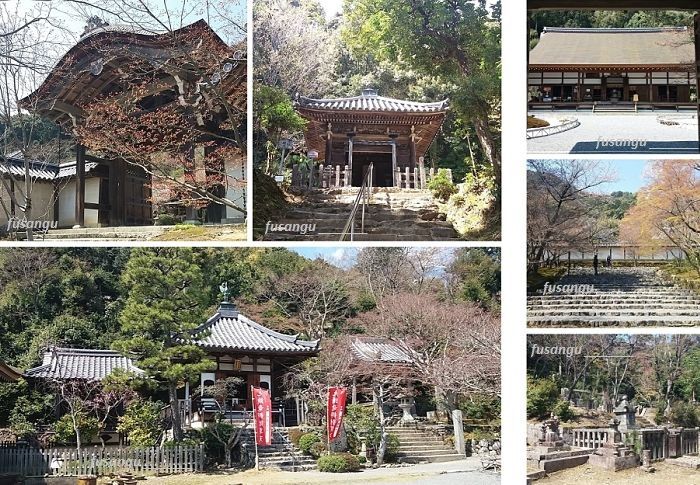
A three-day visit allows to see a small but significant part of Kyoto’s most important sightseeing places.
Being the duration of the journey very limited, there is not much room for improvisation and a careful planning is required in order to minimise the time absorbed by transfers.
Considering the relatively limited options of getting around in a fast and easy way, a good strategy is to devote each day to a very limited area of the city and make appropriate choices on where to find accommodation.
In this page we provide detailed information and suggestions on how to spend three days in Kyoto. Possible half-day excursions to nearby travel destinations are also presented. Final remarks help define possible adjustments and variations based on the season.
The itinerary and its variants are centred on the must-see places, those exceptionally beautiful religious and historical sites which have shaped the image and the identity of the ancient capital and elevated it to the status of symbol and cultural core of traditional Japan.
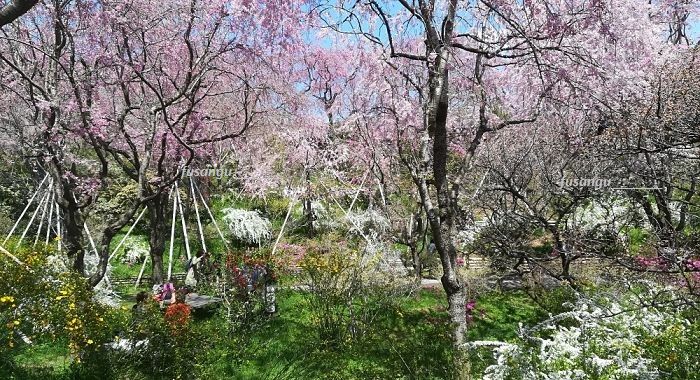
As three days are a very limited time frame to visit Kyoto, a good choice to spend one day in Higashiyama, one day in Kita and its surroundings (either Kamigyo or Ukyo) and one day in Arashiyama. The magnificient Fushimi Inari shrine can be easily visited at the end of the second or third day.
Said itinerary is particularly recommended to those who travel in Japan for the first time.
Being time very limited, we suggest you visit the mundane centre during the evening. In many ways this choice proves to be the right one, as you will easily ascertain later.
Contents
-
First visit to Kyoto (sightseeing places, things to do in a 3-day stay)
-
Suggested itinerary (programme, detailed description of the journey, possible variations)
First visit to Kyoto: must-see places, things to do
Despite being one of the few Japanese cities which were not annihilated during the last year of World War II, the centre of Kyoto is quite dull and uninteresting and very little remains of its historical architecture.
The vast majority of the city’s cultural treasures and sightseeing spots are found in peripheral districts and the surroundings.
Higashiyama, situated to the east of the centre, is the area where you can enjoy the atmosphere and beauty of the ancient city. A good amount of traditional houses, tea houses, temples along picturesque narrow alleys can be found here. They offer plenty of occasions for relaxing and inspiring strolls, especially if your imagination can actively complement your observations.
Gion, the so-called geisha district, is the core of this area and in many ways the place where you will want to start and finish your visits (possibly at dawn and dusk, where tranquillity and silence will make you feel and see what you would never perceive in daylight and in the midst of crowds).
Along with Higashiyama, you should not miss neighbouring Sakyo, to the north, where many of Kyoto’s most beautiful and culturally significant shrines and temples lie amid forested and scarcely populated hills.
A typical first time visit to Kyoto encompasses the beautiful Kinkaku-Ji (the Golden Pavilion), the enchanting Fushimi Inari Taisha, amazing shinto shrine set in a mysterious forest on a sacred hill, and Arashiyama, an astonishing cultural landscape, where human intervention seems to have reached perfection in its reverent dialogue with nature.
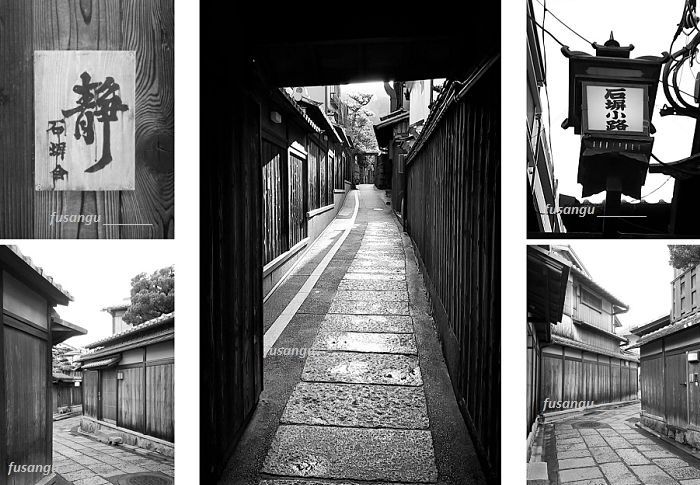
Itinerary: Higashiyama, Kita, Fushimi Inari Taisha, Arashiyama
This itinerary is a good introduction to ancient Kyoto. The pace is not too fast as to make the experience enjoyable and allow for some improvisation.
Visits should commence no later than 8:00 (possibly by 7:00 during high season, especially during cherry blossom and autumn leaf periods).
The programme is most suitable for those who stay near Kyoto Station, Higashiyama (Gion). These are in our opinion the best places to find accommodation for such a short stay.
Day 1: Sakyo and Higashiyama
Higashiyama (“eastern hills”) is a large district where urban density is low and small and old houses are often surrounded by forests and parks. Together with neighbouring Sakyo, this is Kyoto's major trove of cultural treasures, a place that has exerted an indelible influence on Japan's cultural and spiritual development.
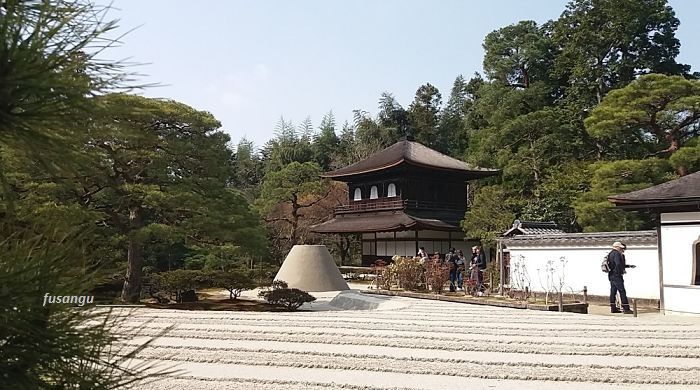
8:30-9:30: Ginkaku-Ji
The journey ought to begin from the renowned Ginkaku-Ji (literally “Silver Pavilion”). A shogun, Ashigaka Yoshimasa, made his villa a gathering venue for philosophers, monks, artists. This villa was later converted into a Buddhist temple.
The place is considered the cradle of the illustrious Culture of Higashiyama, which had a profound and lasting influence on the flourishing of arts such as tea ceremony and design of landscape gardens.
The temple comprises a number of ancient buildings centred around a dry garden. The Silver Pavilion, Kannon-den, houses a statue of Kannon, Bodhisattva of Mercy. It did not get the decorative finishing its name refers to but this does not detract from the extraordinary finesse of its architecture.
Lush vegetation meticulously taken care of, a small moss garden and a tiny bamboo grove are encountered as you move along the circular visiting path. Rising above the temple, the trail allows for a commanding view over Sakyo.
9:30-11:00: Philosopher’s path
A few hundreds of metres separate the entrance of Ginkaku-Ji from the famous Philosopher’s path.
This is a small trail running from north to south along a small canal. Small houses, most of which are not particularly beautiful but retain the scale and feel of the old architecture are to be seen to the right; to the left you will find a few alleys leading into small neighbourhoods and secluded temples.
Making for a pleasant stroll at any time of the year, the trail is a must-see attraction during the cherry blossom when the prevailing someiyoshino cherries form amazing tunnels of white flowers. The enchanting view is made even more beautiful by the singularity of a few rarer weeping cherries, whose vivid pink flowers gently stand out.
Along the path you may want to pay a visit to the Honen-In.
Without hurrying too much you will likely get to the Eikan-Do Zenrin-Ji by 11:00. This is another Buddhist temple, particularly popular when the maples turn red (which usually occurs during the second half of November).
11:00-12:30: lunch break
Having lunch early is a good way of avoiding tedious queues at restaurants. This is particularly important during the cherry blossom, where you will likely encounter large crowds.
12:30-13:30: Chion-In
The Chion-In is one of Kyoto’s largest and most popular Buddhist temples. Head of the Jodo school, the compound comprises several buildings and gardens set in the slope of a hill.
Amid an amazing natural setting are some of the finest examples of the ancient capital’s sacred architecture.
The imposing Sanmon, the largest wooden gate in Japan, leads to a large flight of stairs. The steep ascent is rewarded by a commanding view of the area.
Artistic, ancient and deeply revered statues are housed in the main halls. Yuzen-En, a modern garden located near the Sanmon, is particularly beautiful in autumn.
13:30-14:30: Maruyama Park, Yasaka Shrine
Continuing southward you enter Maruyama Koen. This is a large and beautiful park, most visited in early spring. The festive atmosphere during cherry blossom is an attraction on its own. The most beautiful tree, a large weeping cherry blossom, glows in pink usually at the end of March.
Nearby is Yasaka-Jinja, one of the most popular shinto shrines of Kyoto.
14:30-15:30: Kodai-Ji
A few hundreds of metres separate Yasaka-Jinja and Kodai-Ji. This is one of Kyoto’s most beautiful zen temples. Enchanting in the autumn colours (lit in the evening in late November), the temple comprises buildings of worship, a garden, tea houses, a bamboo grove. The composition and its single elements amount to a real masterpiece.
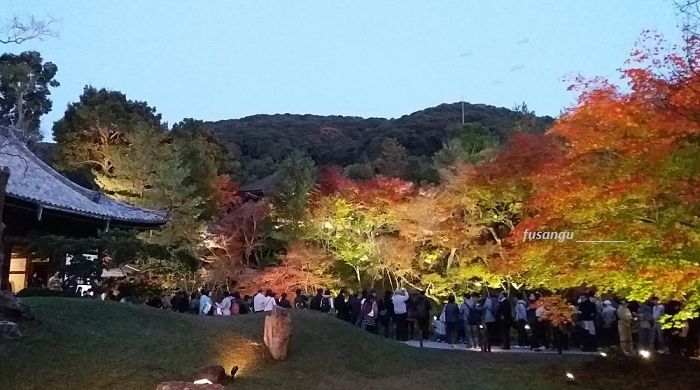
15:30-16:30: Ichinen-zaka, Ninen-zaka, Sannen-zaka, Gonen-zaka
There is not enough time to wander around Gion and that is best done in the evening (or at dawn if you choose to stay here) when there it is not crowded.
Once you are done with the visit to Kodai-Ji, find the Daidokoro-zaka alley and turn left into Nene-no-michi. This is the beginning of a fascinating itinerary along picturesque alleys (Ichinen-zaka, Ninen-zaka, Sannen-zaka, Gonen-zaka), pleasant sights. Do not miss out on Yasaka-no-to Pagoda.
16:30-17:30: Kiyomizu-dera
The final destination is Kiyomizu-dera (“Pure Water Temple”), a magnificent Buddhist temple atop a small hill surrounded by woods.
Its architecture is unique. A terrace connected to the main hall allows beautiful views over cherry and maple trees. In the right season, the feast of colours is a wonderful sight.
Make sure you visit nearby Jishu Shrine, dedicated to the deity of love, and Otowa Waterfall, whose waters are said to bestow conjugal happiness, success in the studies and longevity. Expecting mothers visit Koyasu Pagoda. From its grounds you get a view of the whole temple.
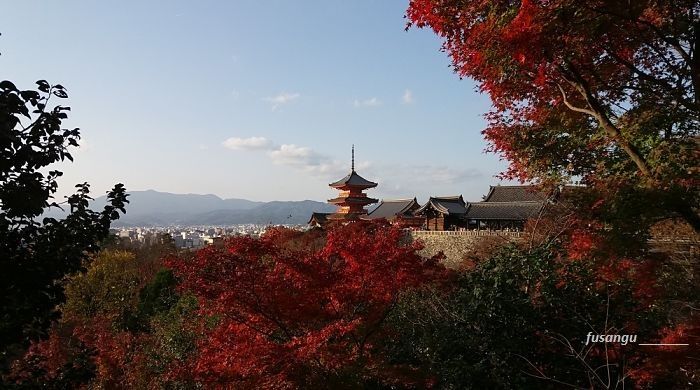
Day 2: Arashiyama and Nijo Castle
On the second day it is possible to reach all destinations by train from Kyoto Station. If you choose to stay in the centre or Higashiyama, you can simply reach the station by bus or subway.
This is an intense programme and depending on your attitude toward travel you might want to reduce the number of sightseeing places.
Arashiyama, already a tourist destination during Heian Period, is an amazing natural and cultural landscape located in the western periphery of the city. You can reach it by train (JR Sagano line) from Kyoto Station in less than half an hour.
7:30-8:30: Togetsu-Kyo, Hozu River
Again, we suggest you start your sightseeing very early, especially in high season. Once you have reach Saga-Arashiyama Station walk westward through the quaint little town. Eventually you will find the river and the recognisable Togetsu-Kyo, a beautiful bridge crossing over Katsura River. The scenery all around is most beautiful in spring and autumn but there is a subtle charm to it during winter.
8:30-9:15: Tenryu-Ji
Not far from the bridge is Tenryu-Ji, an ancient Buddhist temple of great cultural significance. While most buildings you can see now are reconstructions, the wonderful garden is in its original form. You can see a wide variety of plants, many of them are labelled.
Follow the paths around the garden and allow yourself some time to contemplate the serene beauty of the scenery.
After reaching the Taihoden (whose exquisite roof in the irimoya-zukuri style shows the sublime influence exerted by Tang China on Japanese sacred architecture), walk northward and exit the grounds of the temple.
9:15-10:00: Bamboo Grove and Kemayama Park (or Okochi Sanso Villa)
A left turn and you are in the famous bamboo grove, one of the most iconic scenes of Kyoto. At the end of the atmospheric trail is decision time. If you turn left you can reach Kemayama Park (very nice in spring). If you turn right you can visit Okochi Sanso Villa.
As time is limited you may decide to skip both and continue walking northwards.
10:00-12:30: Jojakko-Ji, Rakushisha, Gio-Ji
Going past Ogura Pond, a tiny building with a thatched roof appears across a field. Its name is Rakushisha, the “Hut of Fallen Persimmons”. Simple, small, modest, you do not need to know Japanese literature to realise that this was the hermitage of a haiku poet.
After visiting the little gem move westward and reach Jojakko-Ji, a Budddhist temple nestled on the western side of Mount Kokura. Its small buildings are little jewels. The pagoda is classified as Important Cultural Property. The scenery in the autumn tones is enchanting.
Proceeding northward you encounter another little treasure. Gio-Ji is a tiny temple nestled amid large trees. The deep shade and vivid colours of the moss garden surrounding the temple create an atmosphere of mystery. Gio-Ji originated at the retreat of a woman who lost the favour of her lover. She was then joined by her mother and sister.
12:30-14:30: Daikaku-Ji or Adashino Nembutsu-Ji and Otagi Nembutsu-Ji
After having lunch you can either visit Daikaku-Ji or, if you enjoy walking, continue walking till Otagi Nembutsu-Ji.
Options:
-
Adashino Nembutsu-Ji and Otagi Nembutsu-Ji: ancient Buddhist temples with distinctive features and a sense of history and seclusion. Along the way you can see many traditional buildings;
-
Daikaku-Ji: founded on the site of a former imperial residence, it is a large Buddhist temple with many buildings in different architectural styles. It lies close to a pond which was modelled after Lake DongTing. DongTingHu is a mythical scenery which inspired countless works of art. It lies between HuNan and HuBei (the two provinces derive their name from their position relative to the lake).
14:30-15:00: From Arashiyama to Nijo Castle
After going back to Kyoto Station, you can take a train bound for Nara. Make sure it stops at Inari Station.
15:00-16:30: Nijo Castle
Nijo-Jo was the residence of the Tokugawa shogun in Kyoto. The elegant architecture displays the power and prestige of the dynasty. Surrounded by a moat and walls with keeps, the grounds are accessed through imposing and richly decorated gates.
With relatively small-scale fortifications, the structures are organised along two circles of defence. Very little remains of the honmaru, the inner circle. Within the ninomaru are the buildings open to visitors. They are among the best examples of this kind of architecture and comprise masterpieces of Japanese art.
Of particularly outstanding artistic value are the fusuma (Japanese sliding doors), the ceilings and the painted screens of the main chamber.
The visit takes you through a number of waiting and audience rooms, connected by a long corridor built with the characteristic “nightingale floors”, which, as a security measure, emit a squeak-like sound when stepped upon.
Inside the castle are gardens and groves of plum and cherry trees. These include relatively rare varieties of plants.
Variants
You can postpone the visit to Nijo Castle to the next day and choose to visit Kyoto’s Railway Museum and Fushimi Inari Shrine.

Day 3: Kita, Ukyo and Fushimi Inari Taisha
The third and last day is devoted to Kita, Ukyo and Fushimi Inari Taisha. All destinations can be easily reached by bus from Kyoto Station, the centre or Higashiyama.
The programme is not too intense and gives plenty of margin for other activities, such as further visits in the areas we have already mentioned or simply a final walk in the centre.
9:00-10:00: Kinkaku-Ji
Kinkaku-Ji (“Golden Pavilion”, formally Rokuon-Ji), is an iconic Buddhist temple located in Kita, on the north-western periphery of Kyoto, near the range of mountains that marks the northern limits of the urban sprawl.
The elegant three-story shariden reflecting in the water of the large Kyokochi pond surrounded by pines and small rocks, is one of the most iconic images of Kyoto and all Japan. It serves as the storehouse of sacred relics.
The walls of its upper structure are covered in gold leaf. Each floor is built in a distinct architectural style. The lavish work of art reflects the taste in vogue during the Kitayama Culture.
The building served as the retirement complex of the shogun. It has been destroyed and rebuilt several times throughout history, the last time in 1950 when a monk burned it down. The event was recounted by Yukio Mishima.
10:00-10:30: From Kinkaku-Ji to Ryoan-Ji
You can reach Ryoan-Ji on foot (in 20 minutes) or by bus (number 59) or taxi in less than 10 minutes.
10:30-11:30: Ryoan-Ji
Formerly an aristocratic villa, Ryoan-Ji was converted into a Zen Buddhist temple. Its hiraniwa (garden without hills or ponds) quickly rose to popularity.
The dry garden features fifteen rocks laid on white gravel. They seem to be drifting in a sea. From whatever angle you view the garden, you will not be able to see all of the rocks.
The mysterious nature of this creation does not come as a surprise as Ryoan-Ji is affiliated to the Rinzai Zen Buddhism, a school that emphasises the importance of solving koan (riddles meant to encourage going beyond the limits of rational thinking) as a privileged way to attain enlightenment.
After pondering and meditating, you can visit the grounds of the temple, which comprise a large pond garden. Most likely you will then return to the rock garden for a final contemplation.
11:30-14:00: Lunch break; transfer to Kyoto Station and then Inari Station
You can have lunch at the tofu restaurant inside Ryoan-Ji or near or inside Kyoto Station. You can reach the station by bus (59 and 101)
Some trains bound for Nara stop at Inari Station, from which you can walk to your next destination, Fushimi Inari Shrine.
14:00-17:00: Fushimi Inari Taisha
A long avenue leads to the entrance of Fushimi Inari Taisha. This is most important shrine in the nation dedicated to the shinto deity of rice.
The gentle ascent along the wide sando inspires a sense of solemnity. At its end the imposing gate. Its majesty is softened by the vibrant vermilion coating.
This colour is employed in almost every building of the site, from the main halls to the more modest auxiliary gates.
After seeing the halls in the lower part of the shrine, the main worship are, go through the impressive sequence of torii which lead deep into the forest. You cannot help but feel the mystic sense of this experience. At the top of the mount are smaller shrines and burial mounds.
Early morning and sunset are the best time for visiting this shrine.
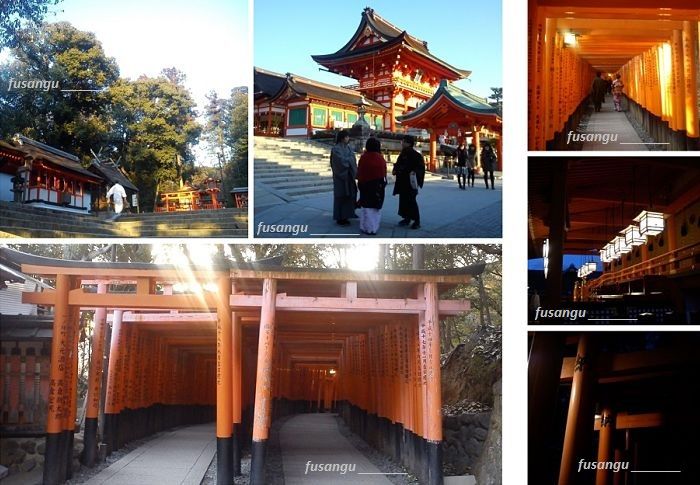
Variant: visit to Uji
You may change the programme so as to have a half day available to visit Uji, a pleasant small town rich in cultural heritage. Uji lies very close to Fushimi District; it is therefore very convenient to devote an entire day to Uji, Fushimi Inari Taisha and southern Higashiyama.
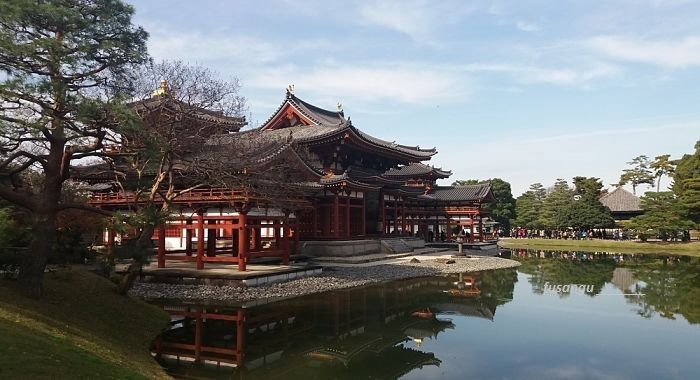
This itinerary is ideally part of a 10-day journey. Details in the following page:
Japan 10-day itinerary (full description of a ten-day trip to Japan; travel arrangements, practical information for a journey along the classic route)
Related articles:
Programmes of similar duration: 2,5 days | 3,5 days
